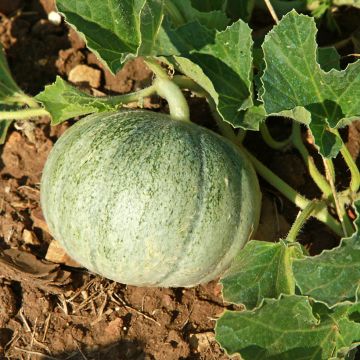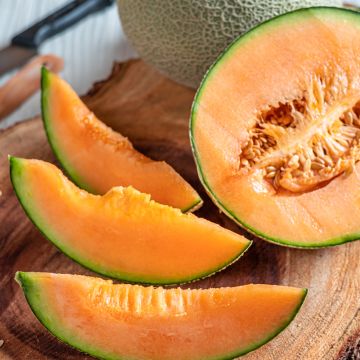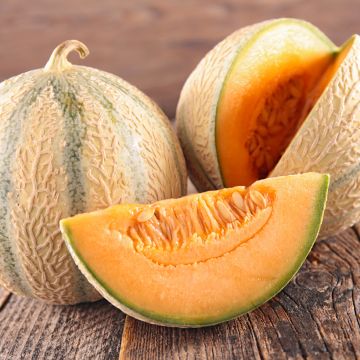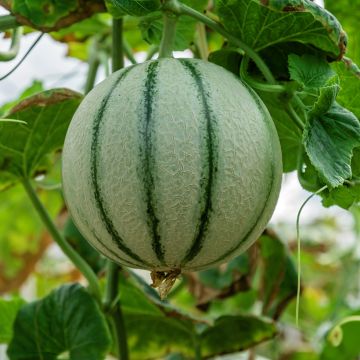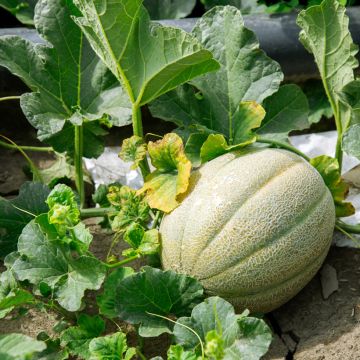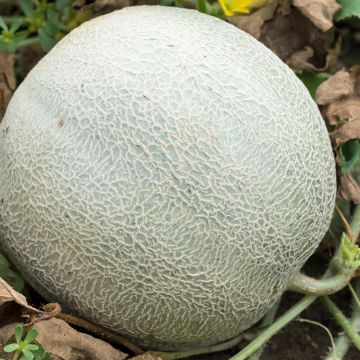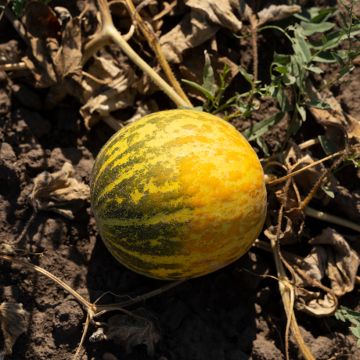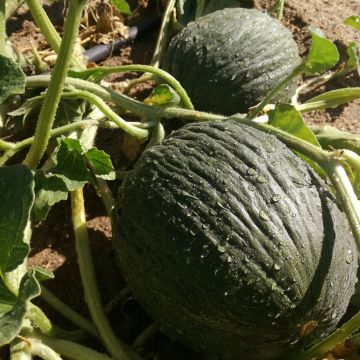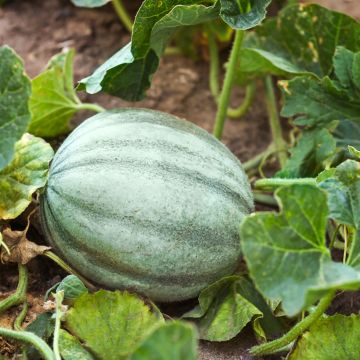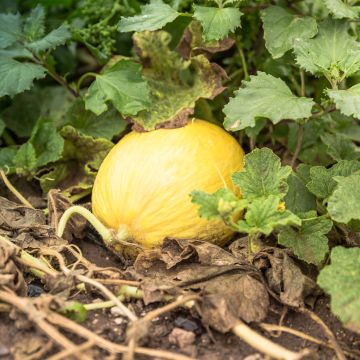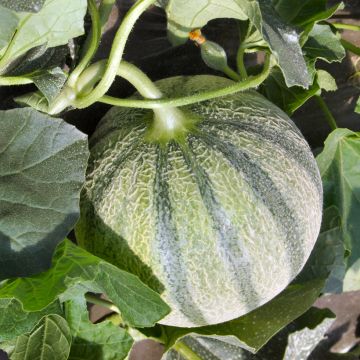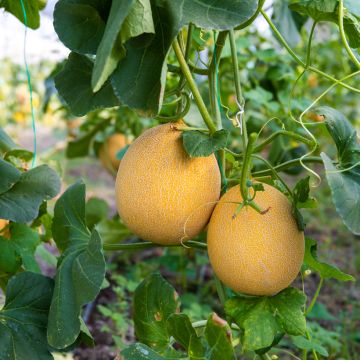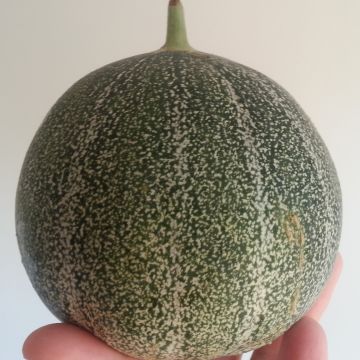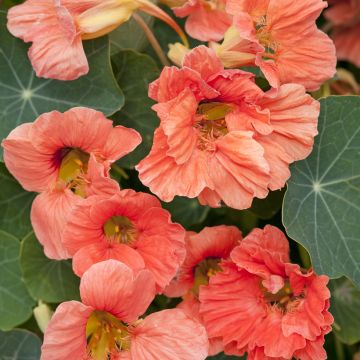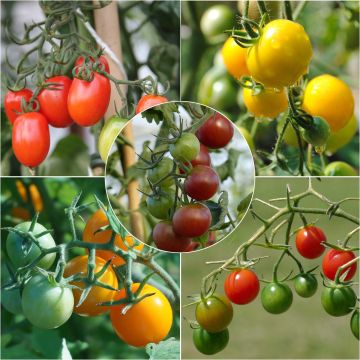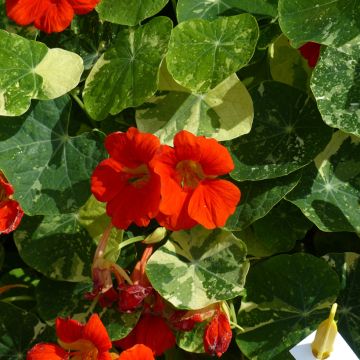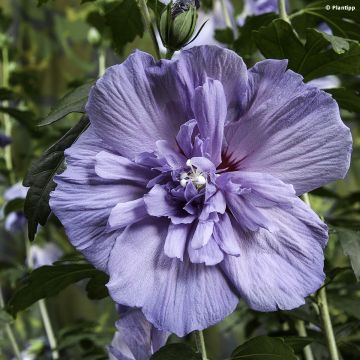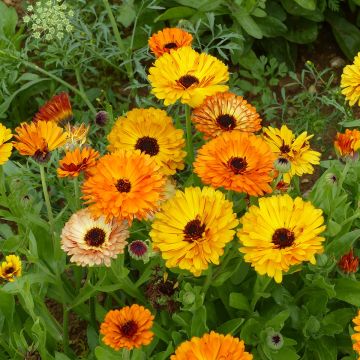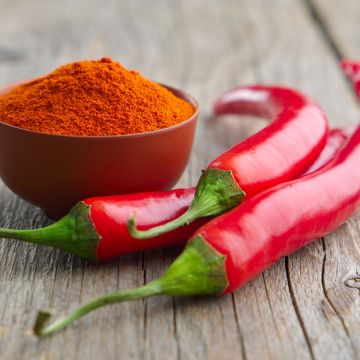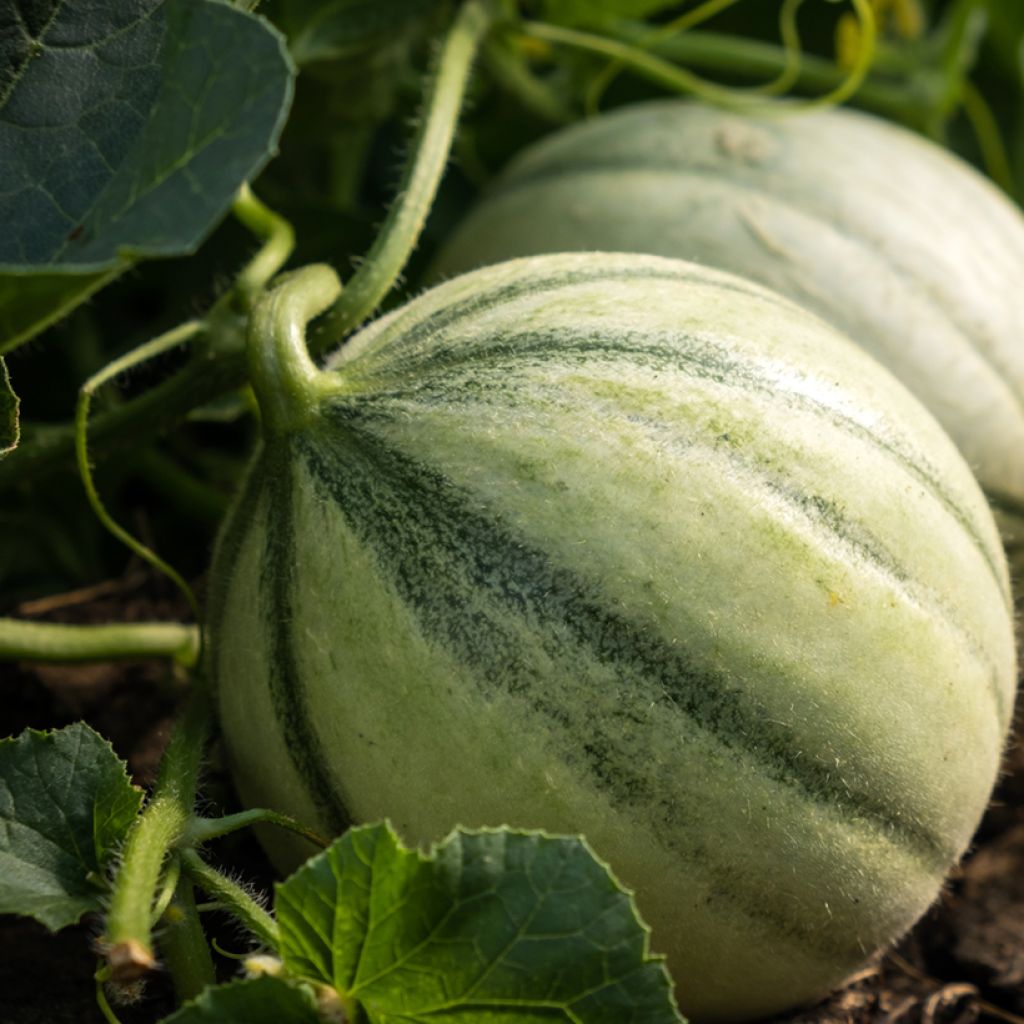

Melon Charentais Santon plants - Cucumis melo


Melon Charentais Santon plants - Cucumis melo
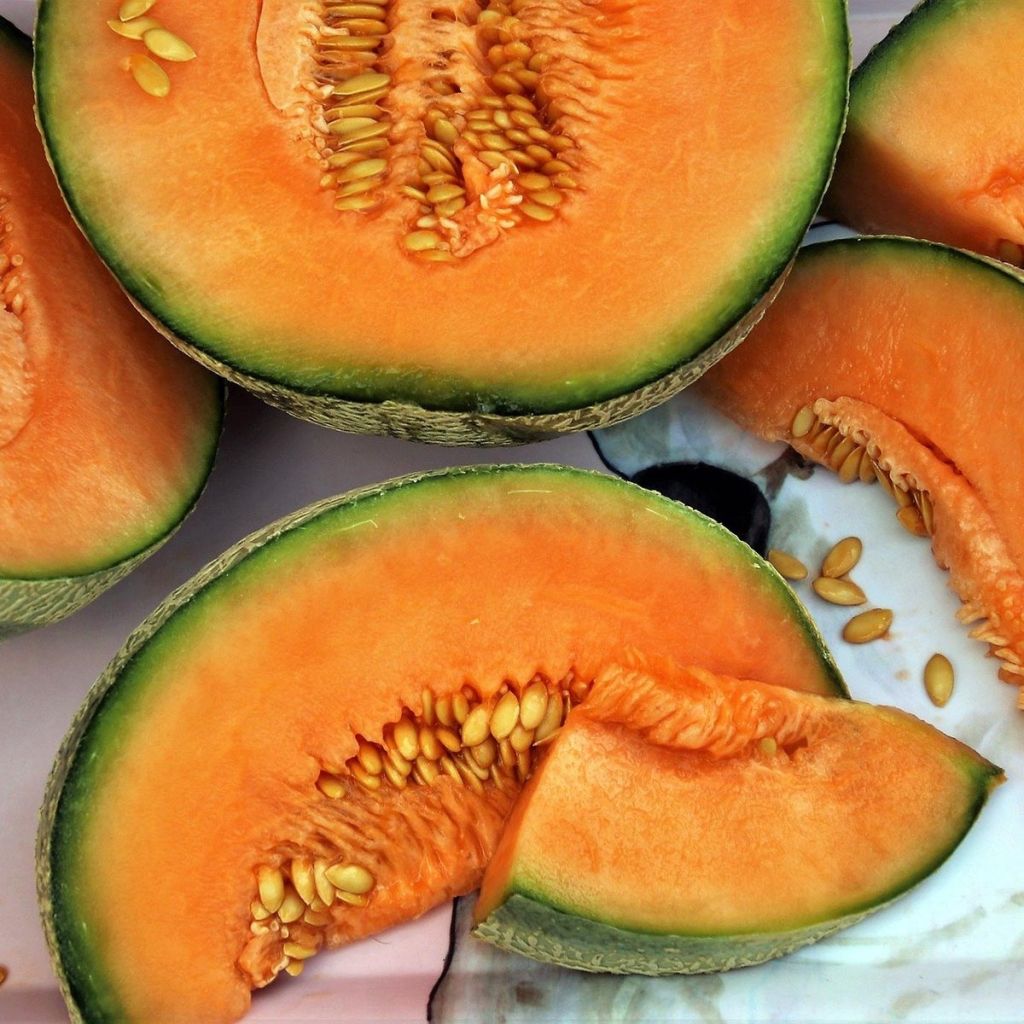

Melon Charentais Santon plants - Cucumis melo
Melon Charentais Santon plants - Cucumis melo
Cucumis melo Santon
Muskmelon, Cantaloupe, Melon
Special offer!
Receive a €20 voucher for any order over €90 (excluding delivery costs, credit notes, and plastic-free options)!
1- Add your favorite plants to your cart.
2- Once you have reached €90, confirm your order (you can even choose the delivery date!).
3- As soon as your order is shipped, you will receive an email containing your voucher code, valid for 3 months (90 days).
Your voucher is unique and can only be used once, for any order with a minimum value of €20, excluding delivery costs.
Can be combined with other current offers, non-divisible and non-refundable.
Why not try an alternative variety in stock?
View all →This plant carries a 6 months recovery warranty
More information
We guarantee the quality of our plants for a full growing cycle, and will replace at our expense any plant that fails to recover under normal climatic and planting conditions.
Description
The 'Santon' Melon is a particularly early variety, perfect for cultivation outside of the Midi region. The plant produces Charentais Cantaloup-type melons, round and weighing about 1kg, with smooth skin and excellent tasting orange flesh. In terms of cuisine, melons can be consumed both as an appetizer and as a dessert! The young plants of the 'Santon' melon are planted from April to June, after the last frost, for a harvest from July to September. They require pruning in order to bear fruit.
The melon is an annual creeping herbaceous plant, belonging to the Cucurbitaceae family. It is a round or elongated fruit, with a smooth, ribbed or reticulated skin. The very watery flesh can be green, white, yellow or orange. In the 18th century, the Cantaloupe-type melon appeared in Armenia, corresponding to the current Charentais type. It was cultivated near Rome in the Pope's pleasure house, called Canta Lupi, which gave it its name Cantaloupe. Its round fruits weigh 0.5 to 1.5kg, their skin is light green, slightly yellowing when ripe. The surface is marked by 9 to 12 ribs separated by dark green furrows. It is said to be "sliced".
It can be eaten raw as an appetizer or dessert, but also in sorbets, jams, compotes or syrup. The small melons removed during thinning and various pruning can be prepared as pickles, marinated in vinegar and accompanied by herbs. Refreshing and diuretic, melon is rich in trace elements and vitamins A, B and C.
Melons need a nutrient-rich soil and plenty of heat for a good fruiting.
Harvest: The melon is ready to be harvested when it emits a sweet smell and a small crack appears around the stem. Cut it with secateurs. The harvest takes place from July to September approximately.
Storage: The melon can be stored for a few days (up to 5 days) in a dry and well-ventilated place, on racks for example. If it has been cut or has suffered a shock, you can freeze it (cut the flesh into pieces and moisten it with lemon juice).
Gardener's tip: Place a slate slab or a tile under the fruit. It will no longer be in direct contact with the ground, thus avoiding rotting due to humidity. Also, consider mulching around the plants, especially during the peak of summer, to keep the soil cool.
Report an error about the product description
Melon Charentais Santon plants - Cucumis melo in pictures




Harvest
Plant habit
Foliage
Other Melon
View all →Planting and care
Melons need a nutrient-rich soil and plenty of warmth for successful fruiting. Choose a location that is both sunny and sheltered. Melon plants prefer cool and well-drained soils. Loosen the soil to a depth of about ten centimetres without turning it over. Add well-decomposed organic compost. If the soil is not well-draining, it is possible to create small mounds for each plant.
Initially, grow the plug plants by transplanting them into trays or buckets with a diameter of 8 to 13 centimetres (3 to 5 inches), filled with potting soil. Caution: When transplanting grafted plants, do not bury the graft point! Place the plants in a warm and bright location. Water regularly.
Planting in the ground should be done when the risk of frost has passed and the soil is sufficiently warm. Space the plants one metre apart in all directions. Dig a hole, place your plant with the graft point level with the ground, and cover with fine soil. Firmly tamp down and water to keep the soil moist.
Melon cultivation requires regular watering (about twice a week in summer, depending on the climate). Be careful to water only the base of the plant and not the leaves to prevent the onset of mildew and powdery mildew. Regularly weed and hoe.
With new hybrid melon varieties, there is no longer a need to pinch the leaves. Only perform step number 4 to ensure a more beautiful fruit. In other cases, especially with heirloom varieties, follow these steps:
- When the plant has four leaves, pinch above the first two leaves to encourage branching. This will result in two main branches.
- Once these branches have at least three leaves, pinch them again above the third leaf on both sides.
- Repeat the process on new branches above the third leaf, following the same principles.
- The fourth pruning is done during the fruiting process by pinching one leaf above the fruit to direct the sap into the fruit rather than the production of new branches.
Keep a maximum of 5 to 7 fruits per plant.
Melons are quite "demanding," so you can follow them with peas or broad beans in your crop rotation.
Cultivation
Care
Intended location
This item has not been reviewed yet - be the first to leave a review about it.
Similar products
Haven't found what you were looking for?
Hardiness is the lowest winter temperature a plant can endure without suffering serious damage or even dying. However, hardiness is affected by location (a sheltered area, such as a patio), protection (winter cover) and soil type (hardiness is improved by well-drained soil).

Photo Sharing Terms & Conditions
In order to encourage gardeners to interact and share their experiences, Promesse de fleurs offers various media enabling content to be uploaded onto its Site - in particular via the ‘Photo sharing’ module.
The User agrees to refrain from:
- Posting any content that is illegal, prejudicial, insulting, racist, inciteful to hatred, revisionist, contrary to public decency, that infringes on privacy or on the privacy rights of third parties, in particular the publicity rights of persons and goods, intellectual property rights, or the right to privacy.
- Submitting content on behalf of a third party;
- Impersonate the identity of a third party and/or publish any personal information about a third party;
In general, the User undertakes to refrain from any unethical behaviour.
All Content (in particular text, comments, files, images, photos, videos, creative works, etc.), which may be subject to property or intellectual property rights, image or other private rights, shall remain the property of the User, subject to the limited rights granted by the terms of the licence granted by Promesse de fleurs as stated below. Users are at liberty to publish or not to publish such Content on the Site, notably via the ‘Photo Sharing’ facility, and accept that this Content shall be made public and freely accessible, notably on the Internet.
Users further acknowledge, undertake to have ,and guarantee that they hold all necessary rights and permissions to publish such material on the Site, in particular with regard to the legislation in force pertaining to any privacy, property, intellectual property, image, or contractual rights, or rights of any other nature. By publishing such Content on the Site, Users acknowledge accepting full liability as publishers of the Content within the meaning of the law, and grant Promesse de fleurs, free of charge, an inclusive, worldwide licence for the said Content for the entire duration of its publication, including all reproduction, representation, up/downloading, displaying, performing, transmission, and storage rights.
Users also grant permission for their name to be linked to the Content and accept that this link may not always be made available.
By engaging in posting material, Users consent to their Content becoming automatically accessible on the Internet, in particular on other sites and/or blogs and/or web pages of the Promesse de fleurs site, including in particular social pages and the Promesse de fleurs catalogue.
Users may secure the removal of entrusted content free of charge by issuing a simple request via our contact form.
The flowering period indicated on our website applies to countries and regions located in USDA zone 8 (France, the United Kingdom, Ireland, the Netherlands, etc.)
It will vary according to where you live:
- In zones 9 to 10 (Italy, Spain, Greece, etc.), flowering will occur about 2 to 4 weeks earlier.
- In zones 6 to 7 (Germany, Poland, Slovenia, and lower mountainous regions), flowering will be delayed by 2 to 3 weeks.
- In zone 5 (Central Europe, Scandinavia), blooming will be delayed by 3 to 5 weeks.
In temperate climates, pruning of spring-flowering shrubs (forsythia, spireas, etc.) should be done just after flowering.
Pruning of summer-flowering shrubs (Indian Lilac, Perovskia, etc.) can be done in winter or spring.
In cold regions as well as with frost-sensitive plants, avoid pruning too early when severe frosts may still occur.
The planting period indicated on our website applies to countries and regions located in USDA zone 8 (France, United Kingdom, Ireland, Netherlands).
It will vary according to where you live:
- In Mediterranean zones (Marseille, Madrid, Milan, etc.), autumn and winter are the best planting periods.
- In continental zones (Strasbourg, Munich, Vienna, etc.), delay planting by 2 to 3 weeks in spring and bring it forward by 2 to 4 weeks in autumn.
- In mountainous regions (the Alps, Pyrenees, Carpathians, etc.), it is best to plant in late spring (May-June) or late summer (August-September).
The harvesting period indicated on our website applies to countries and regions in USDA zone 8 (France, England, Ireland, the Netherlands).
In colder areas (Scandinavia, Poland, Austria...) fruit and vegetable harvests are likely to be delayed by 3-4 weeks.
In warmer areas (Italy, Spain, Greece, etc.), harvesting will probably take place earlier, depending on weather conditions.
The sowing periods indicated on our website apply to countries and regions within USDA Zone 8 (France, UK, Ireland, Netherlands).
In colder areas (Scandinavia, Poland, Austria...), delay any outdoor sowing by 3-4 weeks, or sow under glass.
In warmer climes (Italy, Spain, Greece, etc.), bring outdoor sowing forward by a few weeks.






























